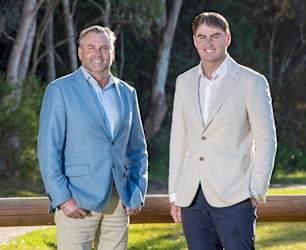There’s an architect named Rem Koolhaas who, as well as being an innovative architect, has written some seminal architectural books. When I was studying at University, it was Rem and his practice OMA [Office for Metropolitan Architecture] that most of us budding architects looked up to. He’s 79 now and still working, but he doesn’t hold the same gravitas as he did back in his heyday. One of the topics I recall he discussed was the homogenisation of the modern city. He argued that Western cities were becoming more and more similar so that wherever you travelled in the world, it was increasingly becoming difficult to determine any features that distinguished one from another. This is best experienced in a city’s airport, which all seem to suffer a level of sameness.
During last year’s architecture festival (IFAD), there was some healthy discussion on the effect of hiring architects unfamiliar with the Illawarra and the result this has on Wollongong’s urban fabric.
In particular, BHP’s decision to engage an internationally renowned architect to design a new masterplan for their surplus land in Port Kembla and the somewhat generic architecture it offered up. Mention was also made of the Corrimal Cokeworks and the WIN Grand developments.
The involvement of local professionals and Indigenous knowledge keepers would benefit such projects and potentially result in something more culturally and contextually site-specific.
There are a number of benefits to engaging locals in the process. Things such as understanding local regulations, cultural sensitivity and contextual design, community connections (eg. for consultants and trades), site visits are made easier and allow for more hands-on involvement, supporting the local economy, to name a few. The most important one in my mind is a familiarity with the local climate and environment. It’s very difficult to gain a real understanding for these factors without living in the place. This only increases with time spent in a location and thus with 60,000 some years of occupation, Indigenous knowledge is invaluable.
The Illawarra’s climate and environment are unique. The escarpment has a localised effect on the weather by capturing moisture from the ocean but also from its overshadowing effect. It’s also still very geologically active with land slippage a regular occurrence. It’s had heavy underground mining in many places and now with many more hard surfaces about such as roads and roofs, localised flooding from more intense rainfall is also a major problem (not to mention leeches!).
There’s also noise from the weekend road warriors along Lawrence Hargrave Drive, along with the traffic jams it creates. The 2am freight train special that can shake a house along the rail line. And, we have rich diversity of wildlife that all need to be considered in any development (did you know a wombat was recently spotted on Morrison Ave!)
The poet David Whyte describes this in more eloquent terms as ‘genius loci’ – the spirit of a place – “it describes a form of meeting, of air and land and trees, perhaps a hillside, a cliff edge, a flowing stream, or a bridge across a river. It is the conversation of elements that makes a place incarnate, fully itself. It is the breeze on our skin, the particular freshness and odours of the water or of the mountain or the sky in a given, actual geographical realm. You could go to many other places in the world with a cliff edge, a stream, a bridge, but it would not have the particular spirit or characteristic, the ambiance nor the climate of this particular meeting place.”
So, as you can well imagine, any non-local designer is at a distinct disadvantage at not being able to grasp many of these important considerations for simply not being on the ground longer than a single site visit.
Once upon a time, before the invention of air-conditioning, cities and their buildings were unique. They had to respond to their local context. In the materials that were readily available as well as the construction techniques available from local trades. Increasingly, this is disappearing as the world becomes more globalised.
We can still be global but embrace the local. My feeling is that these new developments don’t yet speak to our place. Our built environment deserves to sit well and be influenced by its genius loci. In doing so, we can protect our uniqueness and celebrate our beautiful Illawarra.






